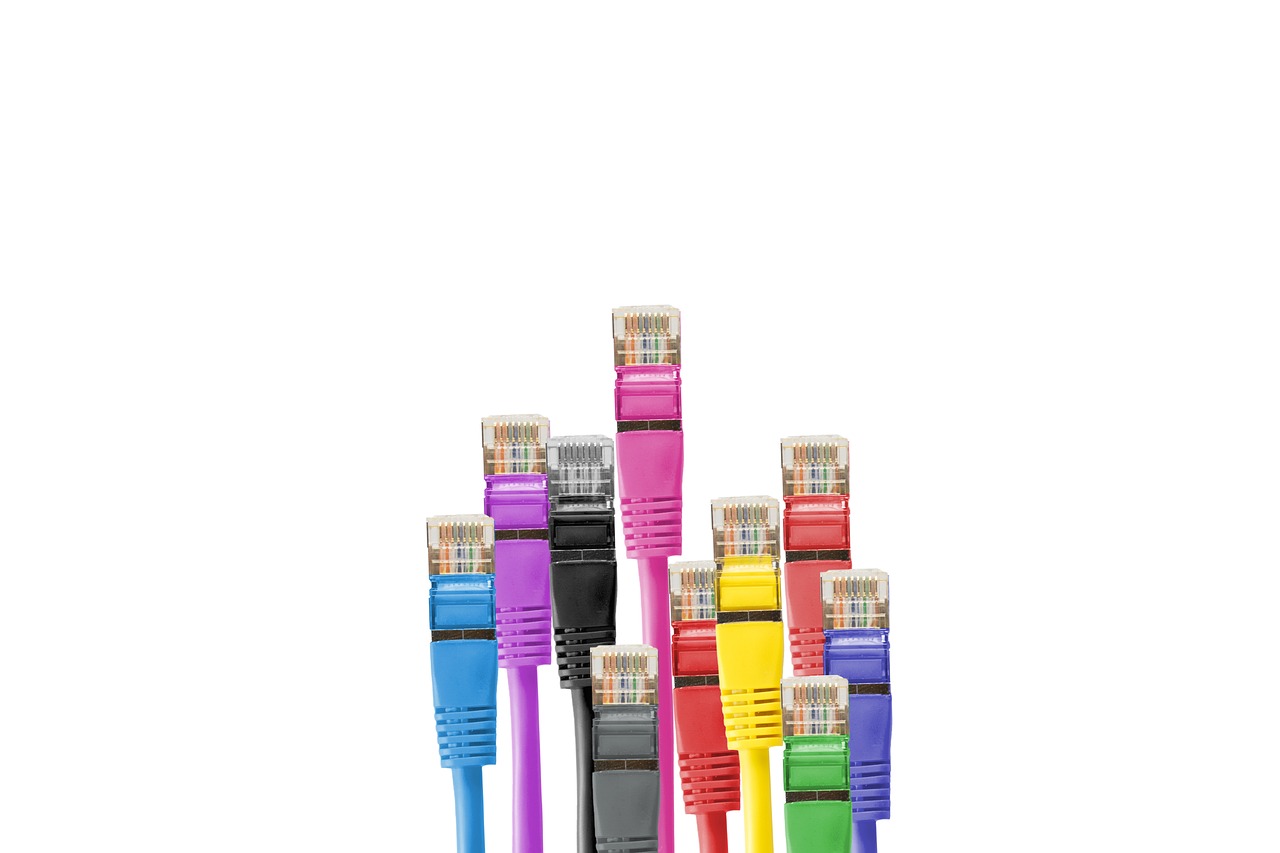Kyber Network - Decentralized Liquidity Protocol
Welcome to the world of Kyber Network, a revolutionary decentralized liquidity protocol that is transforming the way we think about trading and liquidity in the decentralized finance (DeFi) ecosystem. Imagine a place where you can seamlessly swap tokens without the need for a central authority, where every transaction is automated and trustless, and where you have complete control over your assets. That's the essence of Kyber Network, and it's making waves in the crypto space.
At its core, Kyber Network allows users to trade digital assets directly with one another, eliminating the complexities and inefficiencies often associated with traditional exchanges. This is not just a technical advancement; it's a paradigm shift that empowers users to take charge of their financial destiny. With Kyber, you are not merely a passive participant in the financial system; you are an active player, able to engage in instant token swaps and contribute to a vibrant liquidity ecosystem.
In a world where financial transactions can often feel slow and cumbersome, Kyber Network stands out by offering a platform that prioritizes speed and efficiency. By aggregating liquidity from various sources, it ensures that users can execute trades quickly, minimizing the dreaded slippage that can occur on other platforms. The architecture of Kyber is designed to be user-friendly, making it accessible to both seasoned traders and newcomers alike.
But what does this mean for you? It means that whether you're looking to trade Ethereum for a new token or provide liquidity to earn rewards, Kyber Network gives you the tools to do so with ease. And as we delve deeper into the workings of this protocol, you'll discover how its key components—like smart contracts and liquidity providers—play a vital role in creating a robust and efficient trading environment.
As we explore the intricacies of Kyber Network, you'll gain insights into the benefits it offers, the challenges it faces, and the exciting future that lies ahead. So buckle up and get ready to embark on a journey through the world of decentralized liquidity, where innovation meets opportunity!
Decentralized liquidity is more than just a buzzword; it's a concept that is reshaping the financial landscape. In traditional finance, liquidity is often controlled by central authorities, which can lead to inefficiencies and barriers to entry. However, decentralized liquidity flips this model on its head, allowing users to trade assets directly with one another without intermediaries.
This shift is significant because it enhances accessibility and transparency. By utilizing blockchain technology, decentralized liquidity protocols like Kyber Network allow users to engage in peer-to-peer transactions, thereby reducing costs and increasing the speed of trades. Imagine being able to exchange tokens at the click of a button, without waiting for approvals or dealing with high fees. That's the power of decentralized liquidity!
Furthermore, decentralized liquidity plays a crucial role in the DeFi ecosystem. It enables a wide range of financial services, from lending and borrowing to trading and yield farming. This democratization of finance means that anyone with an internet connection can participate, regardless of their location or financial background. It's a game-changer that empowers individuals and fosters financial inclusion.
So, how does Kyber Network actually work? At its heart, Kyber operates as an on-chain liquidity protocol that aggregates liquidity from various sources, including liquidity providers and reserves. This means that when you want to swap tokens, Kyber can source the best prices from multiple liquidity pools, ensuring you get the most favorable rates.
When you initiate a token swap, Kyber's smart contracts automatically execute the transaction, handling everything behind the scenes. This automation not only speeds up the process but also enhances security, as users don't have to trust a third party to manage their funds. Instead, they can rely on the code that governs the protocol, which is transparent and verifiable on the blockchain.
To understand Kyber Network better, it's essential to explore its key components:
- Smart Contracts: These are the backbone of the protocol, ensuring that all transactions are executed automatically and securely.
- Liquidity Providers: Individuals or entities that supply tokens to the platform, earning rewards in return.
- Reserves: Various liquidity pools that help maintain market efficiency and ensure users can swap tokens at competitive rates.
Smart contracts are like the digital gatekeepers of Kyber Network. They automate transactions, ensuring that everything runs smoothly without the need for human intervention. Think of them as a set of rules that dictate how the protocol operates. When you make a trade, the smart contract verifies the transaction, executes it, and updates the blockchain, all in a matter of seconds. This trustless interaction is what makes decentralized finance so appealing.
Liquidity providers are the lifeblood of Kyber Network. By supplying tokens to the platform, they enable users to trade seamlessly. In return for their contribution, liquidity providers earn fees based on the trades that occur using their tokens. It's a win-win situation: users get access to liquidity, while providers earn rewards for their participation.
Kyber Network offers a plethora of benefits that make it an attractive option for traders and liquidity providers alike. Here are some of the standout advantages:
- Reduced Slippage: By aggregating liquidity from multiple sources, Kyber minimizes slippage, ensuring that users get the best possible rates on their trades.
- Instant Transactions: Thanks to its on-chain architecture, trades are executed almost instantaneously, allowing users to react quickly to market changes.
- Wide Range of Supported Tokens: Kyber Network supports a diverse array of tokens, enabling users to trade various assets without hassle.
Despite its many advantages, Kyber Network is not without challenges. The DeFi space is incredibly competitive, with numerous protocols vying for users' attention. As the landscape evolves, Kyber must continuously innovate to stay relevant.
The DeFi ecosystem is rapidly growing, and with that growth comes fierce competition. Protocols like Uniswap and SushiSwap are also offering decentralized trading solutions, making it imperative for Kyber Network to carve out its unique value proposition. How does it plan to do that? By focusing on user experience, enhancing liquidity, and expanding its offerings.
Effective liquidity management is crucial for maintaining a healthy ecosystem. Kyber Network employs various strategies to optimize liquidity, such as incentivizing liquidity providers and ensuring that reserves are well-managed. This not only improves the user experience but also strengthens the overall stability of the protocol.
As we look to the future, Kyber Network is poised for exciting developments. The team is committed to continuous innovation, exploring new features and partnerships that could further enhance the protocol's capabilities. With the ongoing evolution of DeFi, Kyber Network is set to play a pivotal role in shaping the future of decentralized finance.
Q: What is Kyber Network?
A: Kyber Network is a decentralized liquidity protocol that enables users to swap tokens seamlessly without a central authority.
Q: How does Kyber ensure low slippage?
A: By aggregating liquidity from various sources, Kyber minimizes slippage, providing users with the best possible rates.
Q: Can anyone become a liquidity provider?
A: Yes! Anyone can supply tokens to Kyber Network and earn rewards for their contributions.
Q: What challenges does Kyber Network face?
A: Kyber Network faces challenges such as competition from other DeFi protocols and the need for effective liquidity management.
Q: What does the future hold for Kyber Network?
A: Kyber Network aims to innovate continuously, exploring new features and partnerships to enhance its offerings in the DeFi space.

Understanding Decentralized Liquidity
Decentralized liquidity is like a bustling marketplace, but instead of a physical location, it exists on the blockchain. Imagine being able to trade goods directly with your neighbor without needing a middleman; that's the essence of decentralized liquidity. It allows users to swap digital assets directly, fostering an environment where financial control is in the hands of the users rather than a central authority. This is particularly significant in the DeFi (Decentralized Finance) landscape, where traditional banking systems often impose restrictions, fees, and delays.
In a traditional setting, liquidity is often managed by centralized exchanges, which can lead to issues such as high fees, slow transaction times, and lack of transparency. However, decentralized liquidity protocols like Kyber Network are changing the game. They create a system where users can provide liquidity and trade assets seamlessly, enhancing the overall efficiency of the market. This is crucial because, in the world of finance, having immediate access to liquidity can mean the difference between profit and loss.
The significance of decentralized liquidity can be summarized in a few key points:
- Empowerment: Users have full control over their assets, reducing reliance on third parties.
- Transparency: All transactions are recorded on the blockchain, providing an immutable and transparent history.
- Reduced Costs: By eliminating intermediaries, users can save on transaction fees.
- Global Access: Anyone with an internet connection can participate, breaking down geographical barriers.
Moreover, decentralized liquidity is not just about swapping tokens; it’s about creating a vibrant ecosystem where users can engage in various financial activities. This includes lending, borrowing, and even earning interest on their assets. The ability to trade directly with others means that users can often find better prices and execute trades more quickly than they would on traditional platforms.
As we delve deeper into the workings of the Kyber Network, it becomes clear that decentralized liquidity is not merely a trend; it's a fundamental shift in how we think about finance. By providing a platform where liquidity is accessible and efficient, Kyber Network is paving the way for a more inclusive financial future. In this new landscape, users are not just participants; they are empowered stakeholders in a system that values transparency, efficiency, and user control.

How Kyber Network Works
The Kyber Network operates as a cutting-edge on-chain liquidity protocol, which means that it functions directly on the blockchain. This innovative approach allows for the aggregation of liquidity from various sources, enabling users to swap tokens seamlessly and instantly. Imagine a bustling marketplace where traders from different backgrounds come together, each bringing their unique goods to sell. In this marketplace, Kyber acts as a central hub, ensuring that there is always something available for everyone, regardless of their needs.
At its core, Kyber Network connects buyers and sellers through smart contracts, which are self-executing contracts with the terms of the agreement directly written into code. These contracts not only facilitate trades but also ensure that transactions are secure and trustless. Users can engage in token swaps without relying on a central authority, which is a fundamental principle of decentralized finance (DeFi). This means that you, as a user, have complete control over your assets and can trade them freely without intermediaries.
One of the standout features of Kyber Network is its liquidity aggregation. The protocol pulls liquidity from various sources, including individual liquidity providers and other decentralized exchanges. This aggregation ensures that users get the best possible rates for their trades while minimizing slippage. Slippage occurs when the price of a token changes between the time a trade is initiated and when it is executed, potentially leading to less favorable outcomes for traders. By utilizing multiple liquidity sources, Kyber Network significantly reduces this risk, making it an attractive option for users looking to swap tokens.
To illustrate how Kyber Network functions, let’s break down its architecture into three key components:
- Smart Contracts: These are the backbone of the Kyber Network, handling everything from trade execution to liquidity management. They ensure that all transactions are transparent and verifiable on the blockchain.
- Liquidity Providers: These individuals or entities supply tokens to the network, earning fees in return. Their participation is crucial for maintaining the liquidity necessary for smooth operations.
- Reserves: The reserves are pools of tokens that help facilitate trades. They play a vital role in ensuring that there are enough assets available for users to swap without delays.
In essence, when a user wants to swap one token for another on Kyber Network, they initiate a transaction through the platform. The smart contracts then assess the available liquidity across different sources and execute the trade at the best possible rate. This process is not only quick but also enhances the overall user experience, making it feel as if you’re trading in a fast-paced, dynamic environment where opportunities are just a click away.
Furthermore, the protocol is designed to be scalable, which means it can handle a growing number of users and transactions without compromising on performance. This scalability is crucial in the ever-evolving DeFi landscape, where demand can fluctuate rapidly. Kyber Network’s ability to adapt to these changes ensures that it remains a reliable choice for users seeking liquidity.
In summary, the Kyber Network operates as a decentralized liquidity protocol that empowers users by providing a seamless and efficient way to swap tokens. By leveraging smart contracts, liquidity aggregation, and a scalable architecture, it stands at the forefront of the DeFi revolution, offering users greater financial control and flexibility.
- What is Kyber Network? Kyber Network is a decentralized liquidity protocol that enables users to swap tokens directly on the blockchain without relying on a central authority.
- How does Kyber Network ensure low slippage? By aggregating liquidity from multiple sources, Kyber Network minimizes the price changes that can occur during token swaps, resulting in lower slippage for users.
- Who are liquidity providers? Liquidity providers are individuals or entities that supply tokens to the Kyber Network, allowing for seamless trades and earning fees in return.
- Can anyone become a liquidity provider? Yes! Anyone can become a liquidity provider by supplying tokens to the Kyber Network, contributing to the overall liquidity and earning rewards.

Key Components of Kyber Network
The Kyber Network is a sophisticated decentralized liquidity protocol that thrives on several key components, each playing a vital role in its overall functionality and efficiency. Understanding these components is crucial for grasping how Kyber facilitates seamless token swaps and enhances the DeFi ecosystem. At the heart of Kyber Network are smart contracts, liquidity providers, and reserves, all of which work in harmony to create a robust trading environment.
Smart Contracts are the backbone of the Kyber Network. These self-executing contracts contain the terms of the agreement directly written into code, allowing for trustless interactions between users. They automate the entire process of token swaps, ensuring that transactions are executed only when specific conditions are met. This not only enhances security but also eliminates the need for intermediaries, making trades faster and more efficient. Imagine a vending machine: you insert your money, select your item, and the machine automatically delivers your choice without any human intervention. That’s how smart contracts function within the Kyber Network, providing transparency and reliability.
Next up are the liquidity providers. These individuals or entities supply the tokens that fuel the Kyber Network, ensuring that there’s always enough liquidity for users to make trades. Liquidity providers are incentivized to contribute their tokens through various mechanisms, such as earning fees from trades that occur using their supplied liquidity. This creates a mutually beneficial relationship: users benefit from the availability of tokens, while liquidity providers earn rewards for their contributions. Think of liquidity providers as the fuel stations for a bustling highway, ensuring that vehicles (traders) can keep moving without running out of gas.
Another essential component is the reserves. In the context of Kyber Network, reserves are entities that hold different types of tokens and are responsible for facilitating trades. They play a critical role in maintaining market efficiency by providing liquidity and ensuring that token prices remain stable. Reserves can be seen as the stockrooms of a retail store, where a variety of products are kept on hand to meet customer demand. By aggregating liquidity from multiple reserves, Kyber ensures that users can access a wide range of tokens and that trades can be executed swiftly, minimizing slippage.
In summary, the synergy between smart contracts, liquidity providers, and reserves is what makes the Kyber Network a powerful player in the decentralized finance space. Each component has its unique function, yet they all contribute to a seamless trading experience that empowers users with greater financial control. As the DeFi landscape continues to evolve, understanding these components will be key to leveraging the full potential of the Kyber Network.
- What is the Kyber Network?
Kyber Network is a decentralized liquidity protocol that allows users to trade tokens directly without intermediaries, enhancing the DeFi ecosystem. - How do smart contracts work in Kyber Network?
Smart contracts automate transactions, ensuring trustless interactions and executing trades only when specific conditions are met. - Who are liquidity providers?
Liquidity providers are individuals or entities that supply tokens to the Kyber Network, earning fees for facilitating trades. - What role do reserves play?
Reserves hold various tokens and provide liquidity, ensuring that trades can be executed efficiently and prices remain stable.

Smart Contracts
Smart contracts are the backbone of the Kyber Network, acting as the essential building blocks that enable automated transactions without the need for intermediaries. Imagine them as self-executing contracts with the terms of the agreement directly written into code. This innovation not only enhances efficiency but also establishes a trustless environment where users can interact securely.
At their core, smart contracts on the Kyber Network facilitate the seamless exchange of tokens. When a user initiates a transaction, the smart contract automatically verifies the conditions specified in the code and executes the trade if those conditions are met. This process eliminates the need for third parties, reducing the risk of fraud and ensuring that trades occur quickly and efficiently.
The importance of smart contracts in the Kyber Network cannot be overstated. They serve multiple purposes:
- Automation: By automating transactions, smart contracts minimize human error and speed up the trading process.
- Security: The decentralized nature of blockchain technology ensures that once a smart contract is deployed, it cannot be altered, making it secure against tampering.
- Transparency: All transactions executed via smart contracts are recorded on the blockchain, providing a transparent and verifiable history of trades.
Furthermore, the Kyber Network employs a unique mechanism where these smart contracts aggregate liquidity from various sources. This aggregation allows users to access the best available rates for their token swaps, enhancing the overall trading experience. The smart contracts continuously monitor market conditions and execute trades at optimal prices, ensuring users get the most value for their transactions.
In summary, smart contracts are not just a feature of the Kyber Network; they are its lifeblood. By leveraging the power of automation, security, and transparency, they create a robust platform that empowers users to trade with confidence. As the DeFi landscape evolves, the role of smart contracts will undoubtedly expand, further solidifying their importance in decentralized finance.

Liquidity Providers
In the vibrant ecosystem of the Kyber Network, play an indispensable role, acting as the lifeblood that keeps the protocol functioning smoothly. These providers are individuals or entities that supply digital assets to the network, enabling seamless token swaps for users. Think of them as the generous patrons at a bustling marketplace, ensuring that there’s always a variety of goods available for trade. Without their participation, the market would face significant challenges, including increased slippage and delayed transactions.
The incentives for liquidity providers are quite appealing. They earn a share of the transaction fees generated from swaps that occur within the network. This creates a win-win scenario: users enjoy fast and efficient trades, while liquidity providers reap the rewards of their contributions. Additionally, liquidity providers can maximize their returns by strategically managing their assets and choosing the right pairs to support.
However, being a liquidity provider is not without its risks. The concept of impermanent loss is a significant consideration. This occurs when the price of the tokens provided diverges significantly from their original price, leading to potential losses compared to simply holding the assets. To mitigate this risk, liquidity providers often engage in thorough market analysis and continuously monitor the performance of their invested tokens.
The Kyber Network has implemented various mechanisms to attract and retain liquidity providers, including:
- Incentive Programs: These programs reward liquidity providers with additional tokens, creating an attractive opportunity for earning.
- Flexible Liquidity Pools: Providers can choose which tokens to contribute, allowing for tailored strategies based on their market outlook.
- Community Engagement: The Kyber community actively supports its liquidity providers through forums and events, fostering a sense of belonging and collaboration.
Overall, liquidity providers are essential to the success of the Kyber Network. Their contributions not only enhance the user experience but also ensure that the network remains robust and competitive in the ever-evolving DeFi landscape. As the market matures, the role of liquidity providers will likely evolve, adapting to new challenges and opportunities, making their participation more crucial than ever.

Benefits of Using Kyber Network
The Kyber Network stands out in the crowded DeFi landscape, offering a plethora of advantages that cater to both casual users and seasoned traders. One of the most significant benefits is the reduced slippage. Slippage occurs when the price of a token changes between the time a transaction is initiated and when it is completed. With Kyber's on-chain liquidity aggregation, users can execute trades at more stable prices, minimizing the risk of slippage dramatically. This is particularly crucial during periods of high volatility, where every fraction of a percentage can make a difference.
Another compelling advantage is the instant transaction capability. Traditional exchanges often involve waiting for confirmations, which can lead to delays and missed opportunities. However, Kyber Network facilitates immediate token swaps, allowing users to seize market opportunities as they arise. Imagine being able to swap your tokens in the blink of an eye—this speed can be a game-changer in the fast-paced world of cryptocurrency trading.
Moreover, Kyber Network supports a wide range of tokens, making it incredibly versatile. Users can trade various ERC-20 tokens seamlessly, without needing to rely on multiple exchanges or platforms. This broad accessibility fosters a more inclusive environment for everyone, from new investors to experienced traders. The ability to easily swap tokens without the hassle of navigating complex interfaces is a breath of fresh air in the crypto space.
Additionally, the network is designed with security in mind. By employing smart contracts, Kyber Network ensures that transactions are executed automatically and transparently, reducing the risk of human error or manipulation. Users can trade with peace of mind, knowing their assets are safeguarded by robust protocols. The decentralized nature of the network also means that there is no central authority that can be compromised, further enhancing security.
Furthermore, liquidity providers are incentivized to contribute to the network through competitive rewards. This not only enhances liquidity but also creates a thriving ecosystem where users benefit from lower fees and better pricing. The more liquidity there is in the network, the more efficient the trading experience becomes for everyone involved.
To summarize the key benefits, here’s a quick table that highlights the advantages of using Kyber Network:
| Benefit | Description |
|---|---|
| Reduced Slippage | Minimizes price changes during transactions, ensuring better trade execution. |
| Instant Transactions | Allows immediate token swaps, enabling users to act quickly in the market. |
| Wide Token Support | Offers a variety of ERC-20 tokens for seamless trading. |
| Enhanced Security | Utilizes smart contracts for automated, transparent, and secure transactions. |
| Incentives for Liquidity Providers | Encourages liquidity provision through competitive rewards, improving overall trading efficiency. |
In conclusion, the Kyber Network not only simplifies the trading process but also enhances the overall user experience through its unique features and benefits. By embracing this decentralized liquidity protocol, users can enjoy a more efficient, secure, and rewarding trading environment.
- What is Kyber Network? Kyber Network is a decentralized liquidity protocol that allows users to swap tokens instantly without relying on a centralized exchange.
- How does Kyber Network reduce slippage? By aggregating liquidity from multiple sources, Kyber Network provides more stable prices for token swaps, minimizing slippage.
- Is Kyber Network secure? Yes, Kyber Network utilizes smart contracts to ensure automated and trustless transactions, enhancing security for all users.
- Can I trade any ERC-20 token on Kyber Network? Yes, Kyber Network supports a wide variety of ERC-20 tokens, making it versatile for users.
- How do liquidity providers benefit from Kyber Network? Liquidity providers earn rewards for supplying tokens to the network, which helps maintain market efficiency and improves trading conditions.

Challenges Facing Kyber Network
Despite its innovative approach and the promise it holds for the decentralized finance (DeFi) landscape, Kyber Network is not without its challenges. One of the most pressing issues it faces is the intense competition from other decentralized exchanges (DEXs) and liquidity protocols. With the DeFi space growing at an unprecedented rate, numerous protocols are emerging, each vying for a share of the market. This competition can lead to fragmented liquidity and a struggle for user attention, making it crucial for Kyber Network to continually innovate and differentiate itself. Just think of it as a crowded marketplace where every vendor is shouting to attract customers; only the most compelling offers will succeed.
Another significant challenge is the need for continuous liquidity. For Kyber Network to function optimally, it must ensure that there is always enough liquidity available for users to execute trades without experiencing significant slippage. This means that liquidity providers must be incentivized adequately to keep their assets on the platform. If liquidity dries up, users may face delays or unfavorable trading conditions, ultimately leading to dissatisfaction and potential migration to other platforms. The dynamic nature of liquidity in DeFi can be likened to a flowing river; if the flow stops, the ecosystem stagnates.
Moreover, the regulatory landscape poses another hurdle for Kyber Network. As governments and regulatory bodies around the world begin to pay closer attention to cryptocurrencies and DeFi platforms, there is a growing uncertainty regarding compliance and legal frameworks. This uncertainty can deter potential investors and liquidity providers, as they may be wary of engaging with a platform that could face regulatory scrutiny. It’s essential for Kyber Network to navigate these waters carefully, ensuring that it adheres to any applicable regulations while still promoting the principles of decentralization.
In addition to these challenges, Kyber Network also has to contend with the technical complexities inherent in operating a decentralized liquidity protocol. As the platform evolves, it must ensure that its infrastructure can handle increased transaction volumes and provide seamless user experiences. This involves continuous upgrades, rigorous testing, and the ability to respond swiftly to technical issues as they arise. Think of it like maintaining a high-performance sports car; regular tuning and upgrades are necessary to keep it running smoothly and efficiently.
To summarize, while Kyber Network has established itself as a key player in the DeFi ecosystem, it must remain vigilant in addressing these challenges:
- Intense Competition: The need to stand out in a crowded market.
- Continuous Liquidity: Ensuring there are always enough assets for trades.
- Regulatory Landscape: Navigating compliance and legal issues.
- Technical Complexities: Maintaining and upgrading infrastructure to support users.
By tackling these challenges head-on, Kyber Network can continue to empower users with greater financial control and solidify its position in the ever-evolving DeFi landscape.
Q: What is Kyber Network?
A: Kyber Network is a decentralized liquidity protocol that allows users to swap tokens directly without relying on a central authority, enhancing the DeFi ecosystem.
Q: How does Kyber Network ensure liquidity?
A: Kyber Network aggregates liquidity from various sources and incentivizes liquidity providers to contribute their assets to the platform.
Q: What are the benefits of using Kyber Network?
A: Users benefit from reduced slippage, instant transactions, and a wide range of supported tokens, making it a versatile choice for token swaps.
Q: What challenges does Kyber Network face?
A: Key challenges include intense competition, the need for continuous liquidity, navigating regulatory issues, and managing technical complexities.

Market Competition
The DeFi landscape is like a bustling marketplace, filled with various vendors all vying for the attention of eager customers. In this vibrant ecosystem, Kyber Network stands out, but it’s not without its challenges. The competition is fierce, with numerous protocols emerging, each promising unique features and benefits. So, how does Kyber Network position itself in this crowded arena? Let’s dive deeper.
One of the primary competitors to Kyber Network is Uniswap, a decentralized exchange that allows users to swap tokens directly from their wallets. Uniswap has gained immense popularity due to its user-friendly interface and innovative automated market maker (AMM) model. This model allows liquidity providers to earn fees by depositing tokens into liquidity pools, which are then used for trading. This approach has attracted a significant amount of liquidity, making it a formidable rival for Kyber Network.
Another noteworthy competitor is SushiSwap, which started as a fork of Uniswap but has since introduced its own unique features, including yield farming and community governance. SushiSwap has effectively captured the attention of users looking for more than just a swapping platform. Its emphasis on community involvement and rewards has made it a strong contender in the DeFi space.
Despite the competition, Kyber Network maintains its edge by focusing on a few key aspects:
- Aggregation of Liquidity: Unlike many competitors, Kyber aggregates liquidity from various sources, ensuring users get the best rates available. This means that even if one liquidity pool is low on funds, users can still find competitive prices.
- Instant Token Swaps: Kyber’s architecture allows for immediate transactions, which is a significant advantage when compared to protocols that require longer processing times.
- Wide Range of Supported Tokens: Kyber supports a diverse array of tokens, giving users the flexibility to trade what they want without being limited to a few options.
However, as the DeFi space continues to evolve, Kyber Network must remain vigilant and innovative. The entrance of new players and the evolution of existing protocols means that staying ahead requires constant adaptation. For instance, protocols like Curve Finance and Balancer are also gaining traction, focusing on specific niches within the liquidity provision landscape. Curve, for example, specializes in stablecoin swaps, offering minimal slippage and high efficiency.
In conclusion, while Kyber Network is a key player in the decentralized liquidity market, it operates in a highly competitive environment. The need for continuous innovation and adaptation is paramount. As users increasingly demand better rates, faster transactions, and broader token support, Kyber must leverage its strengths while addressing challenges posed by competitors. The future of Kyber Network will largely depend on its ability to navigate this competitive landscape and continue providing value to its users.
- What is Kyber Network? Kyber Network is a decentralized liquidity protocol that allows users to swap tokens directly from their wallets without relying on a central authority.
- How does Kyber Network differ from other DeFi protocols? Kyber aggregates liquidity from multiple sources, ensuring users get the best rates and instant transactions, while many competitors focus on single liquidity pools.
- What are the benefits of using Kyber Network? Users benefit from reduced slippage, a wide variety of supported tokens, and the ability to execute trades instantly.

Liquidity Management
Effective liquidity management is a cornerstone of any successful decentralized finance (DeFi) protocol, and the Kyber Network is no exception. In a landscape where users demand instant access to assets and minimal slippage, Kyber Network employs a variety of strategies to ensure that liquidity remains abundant and efficient. But what does liquidity management really mean in this context, and why is it so critical?
At its core, liquidity management involves maintaining a balance between the supply and demand of tokens within the network. When users want to swap one token for another, they expect the process to be seamless and quick. If the liquidity is low, it can lead to higher slippage—where the price you pay for a token is significantly different from the expected price—resulting in a frustrating experience. To combat this, Kyber Network aggregates liquidity from multiple sources, including various reserves and liquidity providers, to create a robust ecosystem that can handle a high volume of transactions.
One of the key strategies Kyber employs is the use of dynamic pricing algorithms. These algorithms adjust the prices of tokens in real-time based on current market conditions. By doing so, Kyber can offer competitive rates and attract more users to its platform. This approach not only enhances user experience but also encourages liquidity providers to contribute their assets, knowing that their tokens will be used efficiently and effectively.
Additionally, Kyber Network's architecture allows for the integration of various liquidity sources. This means that liquidity can be sourced not just from within the Kyber ecosystem but also from external platforms. By tapping into a larger pool of liquidity, Kyber can ensure that users have access to a wide range of tokens and can execute trades without delay. This interconnectedness is vital in a market that can fluctuate rapidly, as it helps stabilize prices and maintain user trust.
Furthermore, Kyber Network incentivizes liquidity providers through attractive rewards. These providers earn fees for every transaction that occurs using their supplied tokens. This creates a win-win situation: users benefit from low slippage and instant swaps, while liquidity providers enjoy a steady stream of income. In this way, Kyber Network not only manages liquidity effectively but also fosters a community of engaged participants who are motivated to keep the ecosystem thriving.
In summary, liquidity management in the Kyber Network is a multifaceted approach that combines dynamic pricing, diverse liquidity sources, and strong incentives for liquidity providers. By focusing on these elements, Kyber ensures that it remains a leading player in the DeFi space, providing users with a reliable and efficient platform for their trading needs.
- What is the role of liquidity providers in the Kyber Network? Liquidity providers supply tokens to the network, enabling users to swap assets seamlessly and earn fees in return.
- How does Kyber Network ensure low slippage? By aggregating liquidity from multiple sources and utilizing dynamic pricing algorithms, Kyber minimizes the difference between expected and actual prices during trades.
- Can anyone become a liquidity provider? Yes, anyone can participate as a liquidity provider in the Kyber Network by supplying tokens to the platform.
- What benefits do liquidity providers receive? Liquidity providers earn transaction fees based on the volume of trades that utilize their supplied tokens, creating a passive income stream.

Future of Kyber Network
The future of the Kyber Network looks incredibly promising as it continues to evolve within the dynamic landscape of decentralized finance (DeFi). With the rapid advancements in blockchain technology and the increasing demand for seamless token swaps, Kyber Network is poised to innovate and expand its offerings significantly. One of the most exciting aspects of its future is the potential for enhanced interoperability with other protocols, which could lead to a more integrated DeFi ecosystem. Imagine a world where different decentralized applications (dApps) and liquidity protocols can communicate effortlessly, providing users with a unified experience. This level of interoperability could revolutionize how users interact with various DeFi services, making it easier than ever to access liquidity and execute trades.
Moreover, Kyber Network is actively exploring the incorporation of advanced features such as automated market makers (AMMs) and improved governance mechanisms. These enhancements could empower users to have a greater say in the protocol's direction while also optimizing liquidity provision. By leveraging community insights and feedback, Kyber can adapt and refine its services to meet the evolving needs of its users. This approach not only fosters a sense of ownership among users but also ensures that the protocol remains relevant in an increasingly competitive market.
Another exciting avenue for Kyber Network's future is the expansion of its supported assets. Currently, the platform boasts a diverse array of tokens, but as new projects emerge and the DeFi landscape grows, the demand for additional assets will undoubtedly increase. By continuously integrating new tokens and maintaining partnerships with emerging projects, Kyber Network can enhance its liquidity pool and attract a wider user base. This strategy not only benefits users by providing them with more trading options but also positions Kyber as a leader in the DeFi space.
In addition to these developments, Kyber Network is focusing on improving its user experience. This includes streamlining the interface, reducing transaction fees, and enhancing the speed of token swaps. The aim is to make the platform accessible to both seasoned traders and newcomers alike. As DeFi continues to attract mainstream attention, ensuring a user-friendly experience will be crucial for retaining and growing its user base.
As we look to the horizon, it's clear that Kyber Network is not just resting on its laurels. The team is committed to innovation and is constantly seeking ways to enhance the protocol's functionality. With a strong foundation already in place, the future seems bright for Kyber Network as it continues to empower users with greater financial control and flexibility in the decentralized finance ecosystem.
- What is Kyber Network?
Kyber Network is a decentralized liquidity protocol that allows users to swap tokens directly without the need for a centralized exchange. - How does Kyber Network ensure liquidity?
Kyber aggregates liquidity from various sources, allowing users to access a wide range of tokens and execute trades instantly. - What are the benefits of using Kyber Network?
Users benefit from reduced slippage, instant transactions, and a diverse selection of supported tokens. - What challenges does Kyber Network face?
Kyber must navigate competition from other DeFi protocols and continuously manage liquidity to maintain its market position. - What is the future of Kyber Network?
Kyber Network aims to innovate with new features, improve user experience, and expand its asset offerings to remain a leader in the DeFi space.
Frequently Asked Questions
- What is Kyber Network?
Kyber Network is a decentralized liquidity protocol that facilitates seamless token swaps and liquidity provision within the decentralized finance (DeFi) ecosystem. It allows users to trade directly with one another without the need for a central authority, empowering them with greater financial control.
- How does Kyber Network work?
Kyber Network operates on-chain by aggregating liquidity from various sources, enabling instant token swaps. It uses smart contracts to automate transactions, ensuring trustless interactions and a smooth user experience.
- What are the key components of Kyber Network?
The main components of Kyber Network include smart contracts, liquidity providers, and reserves. Smart contracts handle the transactions, liquidity providers contribute tokens to the platform, and reserves help maintain market efficiency by ensuring there's always liquidity available.
- What are the benefits of using Kyber Network?
Some benefits of using Kyber Network include reduced slippage during trades, instant transaction execution, and a wide variety of supported tokens for users to choose from, enhancing their trading experience.
- What challenges does Kyber Network face?
Kyber Network faces challenges such as intense competition from other DeFi protocols and the ongoing need for continuous liquidity to maintain its operations. These factors can impact its market position and user experience.
- How does Kyber Network manage liquidity?
Kyber Network employs various strategies to optimize liquidity, including incentivizing liquidity providers and maintaining a diverse range of reserves. This helps ensure that users can always find the tokens they need for trading.
- What is the future of Kyber Network?
The future of Kyber Network looks promising as it aims to innovate and expand its offerings. Potential developments could include new features, partnerships, and enhancements that will further shape the landscape of decentralized finance.



















